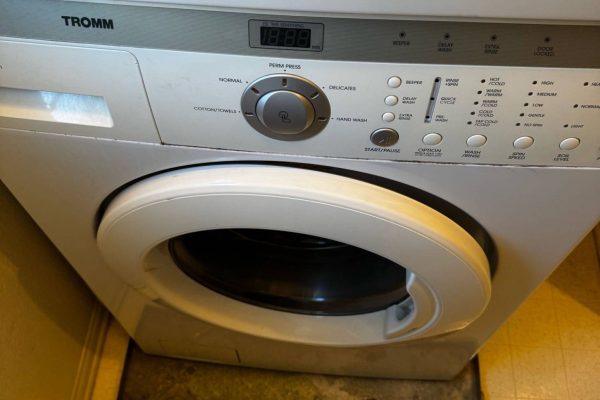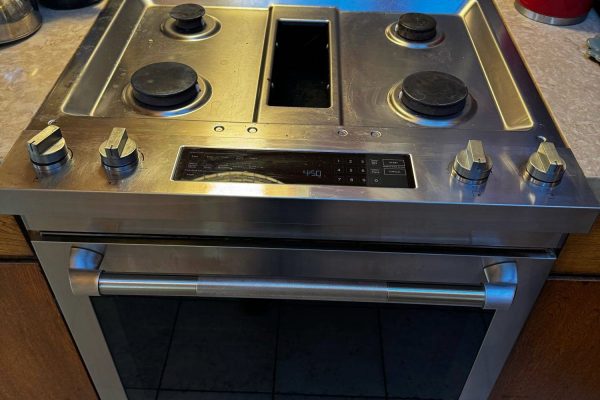You’ve just finished a wash cycle, opened your machine door, and expected fresh, damp laundry ready for drying—but instead, everything is dripping wet. Frustrating? Definitely. Unusual? Not at all. A washing machine that fails to spin or drain properly can leave clothes overly wet after a cycle, indicating an issue that needs attention. Let’s break down the most common reasons this happens and how you can get your machine back in top condition.
1. Unbalanced Load
One of the simplest reasons for wet laundry is an unbalanced load. If heavy items like blankets or towels gather on one side of the drum, it can prevent the washer from spinning effectively. Modern washing machines often detect imbalance and stop or slow the spin cycle to avoid damage. The result? Soaking wet clothes at the end of the cycle.
What to do: Redistribute the load and run the spin cycle again. For future loads, try to balance heavy and light items more evenly.
2. Clogged or Faulty Drain Pump
If your washer can’t drain water properly, the final spin won’t be effective. A clogged or malfunctioning drain pump is a common culprit. Lint, debris, or small objects (coins, buttons) can block the pump or filter, causing water to remain inside the drum.
What to do: Check the drain pump filter (usually located behind a panel at the bottom front of the machine) for obstructions. If the pump itself is faulty or making unusual noises, it may need to be replaced.
3. Drain Hose Issues
A kinked, clogged, or incorrectly positioned drain hose can also interfere with the washer’s ability to drain. If water can’t leave the machine, your laundry stays soggy.
What to do: Inspect the hose for blockages, kinks, or improper height. Make sure it’s not inserted too far into the drain standpipe, which could cause siphoning.
4. Spin Cycle Malfunction
If the spin cycle doesn’t activate or is shorter than usual, your clothes won’t be wrung out properly. This could be caused by a faulty control board, defective motor, or issues with the belt in top-loading machines.
What to do: Listen for unusual sounds or watch for skipped spin cycles. These signs indicate a mechanical or electrical issue that often requires professional diagnosis.
5. Worn or Broken Drive Belt
In belt-driven washers, the drive belt connects the motor to the drum. Over time, belts can stretch, wear out, or break, preventing the drum from spinning at full speed. Your laundry ends up wet because it hasn’t been spun properly.
What to do: Replacing a drive belt is a job best left to a qualified technician. If your washer seems to be agitating but not spinning—or spinning too slowly—this could be the problem.
6. Overloaded Machine
It’s tempting to stuff as many clothes as possible into one load to save time and energy. But overloading prevents the drum from rotating freely and stops water from draining effectively.
What to do: Stick to the manufacturer’s recommended capacity. If you’ve overloaded your washer, remove some items and run an extra spin cycle.
7. Control Board or Sensor Failure
Advanced washing machines rely on electronic components and sensors to determine when and how to perform each cycle. A malfunctioning control board or sensor may prevent the spin cycle from completing or cause incorrect water levels to be used.
What to do: If none of the above issues apply and your washer is still leaving clothes wet, the problem may lie in its electronics. These components are intricate and best handled by professionals.
Don’t Ignore the Signs
Washing machines are complex systems. If your laundry is consistently wet after the final cycle, it’s more than an inconvenience—it’s a sign your appliance needs attention. Continuing to use a malfunctioning washer can lead to larger, more expensive problems down the line.
That’s where Poway Appliance Repair Service Center comes in.
Our experienced technicians can quickly diagnose the issue and get your washing machine working like new. We handle all major brands and models, offering prompt, reliable, and affordable service.
Tired of wet laundry? Don’t wait. Contact Poway Appliance Repair Service Center today and get your washer back in top shape!
Contact us


